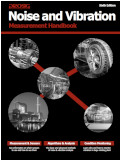Dynamic Range And Overall Level : What Are They ?
Accurate measurement of a signal depends on the dynamic range and the overall level of the data acquisition system. The overall level setting may be thought of as determining the largest signal that can be measured. This clearly depends on the present gain setting. That is the overall level is related to the gain. Clearly if the overall level is too small (gain too high) then the signal will be clipped and we will have poor quality data. The dynamic range then tells us that for the given overall level what is the smallest signal we can measure accurately whilst simultaneously measuring the large signal.
In a very simple sense suppose we have an artificial signal which consists of a sinewave at a large amplitude A for the first half and that this is followed by a sinewave with a small amplitude a for the second half. We will set the gain (the overall level) to allow the best measurement of the A sinewave. The dynamic range tells us how small a may be so we can also measure that without changing settings.
(more…)






